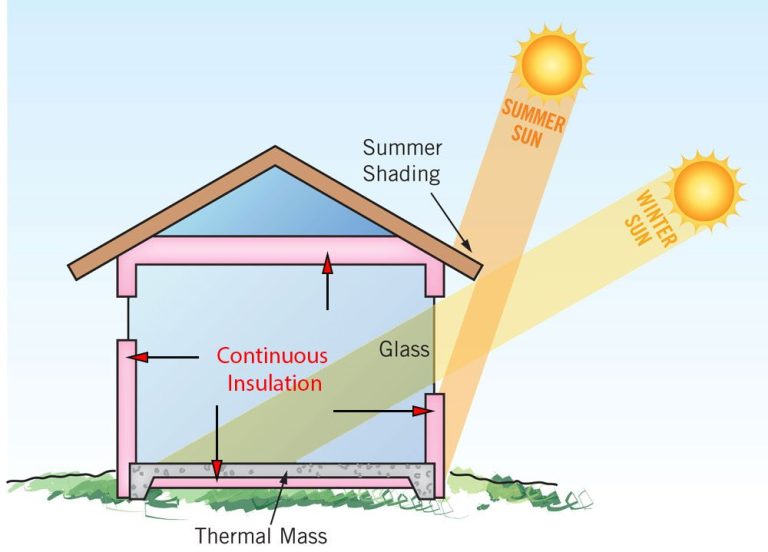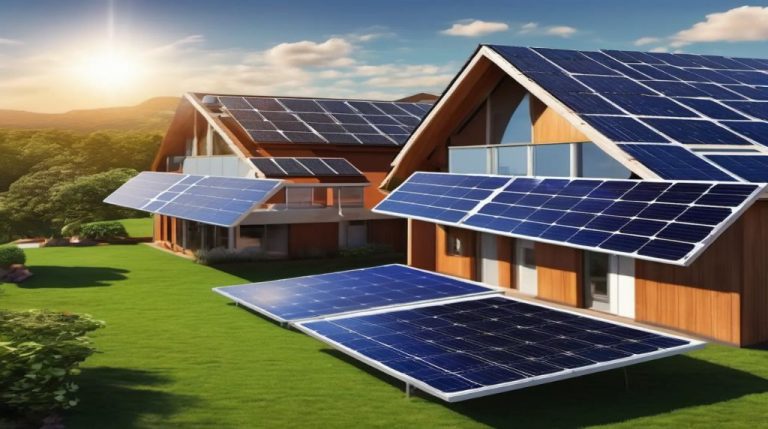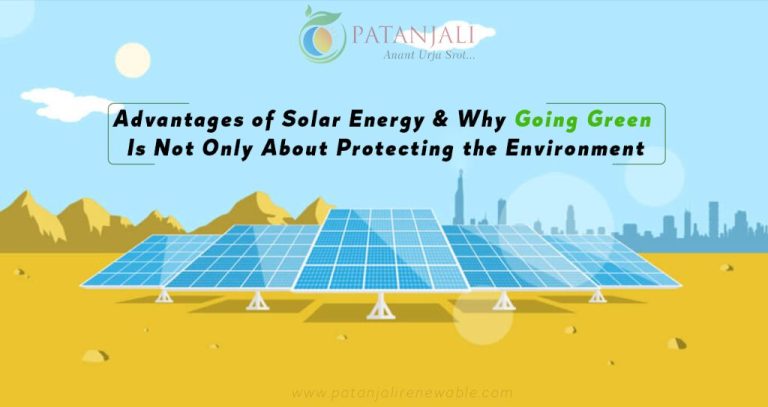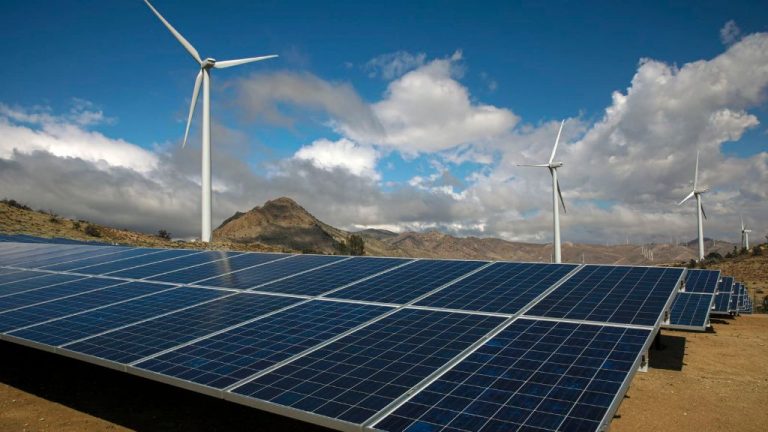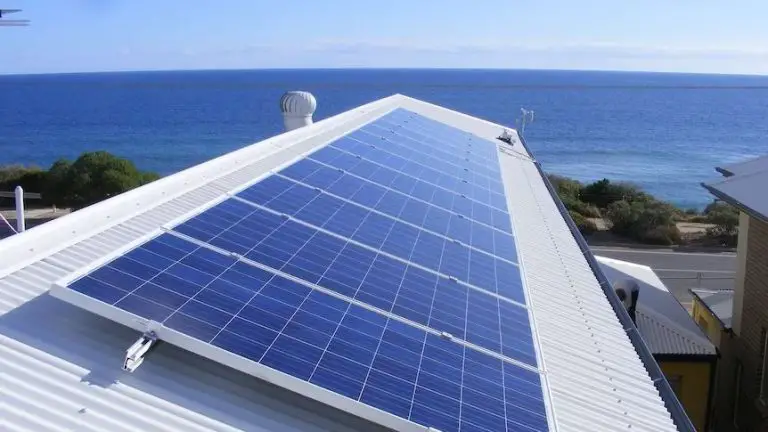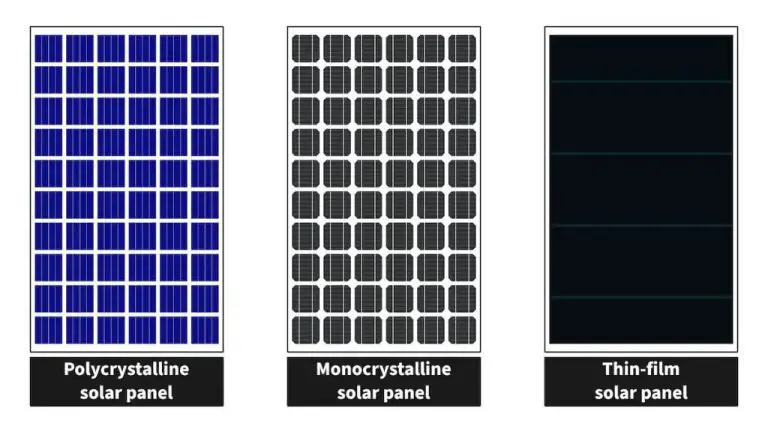What Renewable Energy Will Not Run Out?
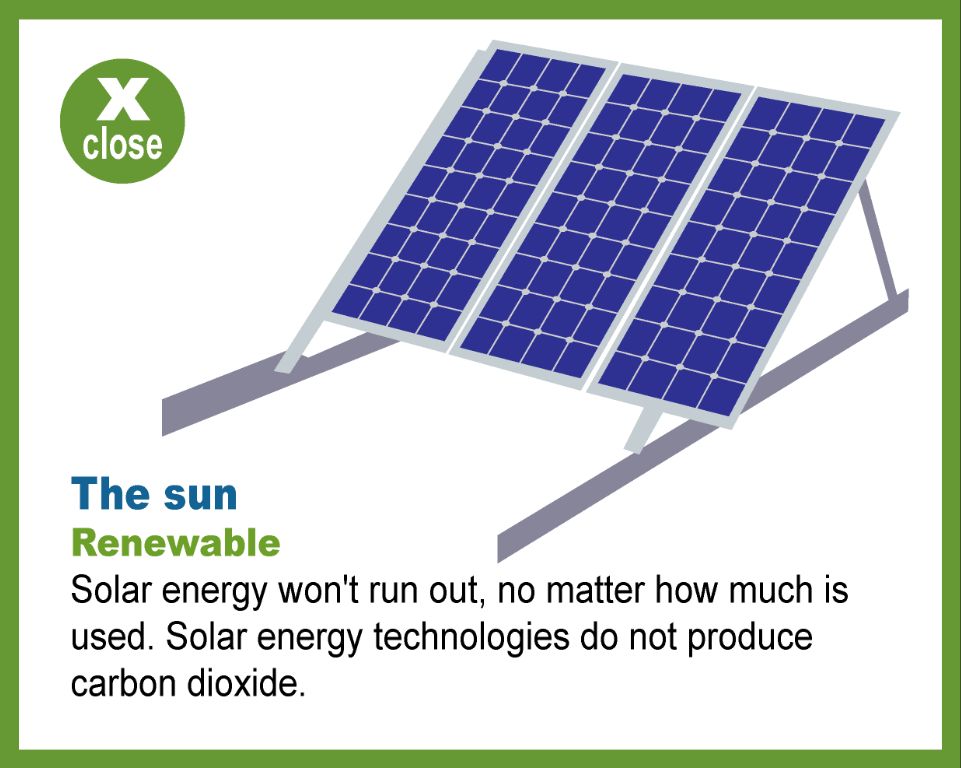
Renewable energy comes from natural sources or processes that are continuously replenished. The five major renewable energy sources that will not run out are solar, wind, hydropower, geothermal and bioenergy. Unlike finite resources such as fossil fuels, renewable energy sources are practically inexhaustible in duration but limited in the amount of energy that is available per unit of time. The importance of renewable energy sources lies in their sustainability, abundance, and environmental benefits. Adoption of renewable energy can reduce dependence on fossil fuels which contribute to climate change. It can also improve energy security and access to energy in remote areas.
This article will provide an overview of the main renewable energy sources that will not deplete – solar, wind, hydropower, geothermal and bioenergy. It will describe how each source works, current usage levels, advantages and limitations. A comparison will be provided to understand the unique characteristics of each renewable energy type.
Solar
Solar energy is the conversion of energy from sunlight into electricity or heat using solar panels or solar thermal collectors. Solar energy relies on photovoltaics, which converts light into electric current using the photovoltaic effect. Solar power is an intermittent energy source, meaning its availability depends on sunlight and weather conditions. However, solar energy has enormous potential as a renewable, clean energy source (MIT, https://energy.mit.edu/research/future-solar-energy/).
Some key advantages of solar power include:
- Renewable – Solar energy is renewable and abundant.
- Reduces electricity costs – Solar panels can generate electricity on-site, reducing reliance on the grid.
- Low maintenance – Solar PV systems require little maintenance once installed.
- Environmentally friendly – Solar generates clean energy without emissions or pollution.
Some disadvantages or challenges facing solar power adoption include:
- Intermittent power – Solar only generates electricity when the sun is shining.
- Energy storage is needed – Battery storage is required to provide power when sunlight is unavailable.
- Large land area requirements – Solar farms require significant land areas to generate utility-scale power.
- High upfront costs – While ongoing costs are low, initial installation costs can be prohibitive.
The future prospects for solar power look very promising. Costs continue to fall dramatically, and solar PV capacity is expected to grow substantially in the coming decades. With improvements in energy storage tech and grid integration, solar can become a major component of the global renewable energy mix (MIT, https://energy.mit.edu/research/future-solar-energy/).
Wind
Wind power is one of the most widely used renewable energy sources. Wind turbines convert the kinetic energy in wind into mechanical power, which is then converted into electricity. Some key advantages of wind power are that it is plentiful, renewable, produces no greenhouse gas emissions during operation, and has low operating costs once installed. Wind turbines can also be built on land or offshore in water.
However, wind power also has some disadvantages. Wind is an intermittent resource, meaning turbines only generate electricity when the wind is blowing within a suitable speed range. The power output from wind farms can fluctuate greatly minute to minute. Wind turbine construction and maintenance costs are relatively high. Turbines also require large amounts of land and can have negative impacts on birds and bats. There are some limitations around ideal wind farm locations.
According to the U.S. Department of Energy’s Wind Vision Report, wind power has the potential to supply 10% of U.S. electricity demands by 2020, 20% by 2030, and 35% by 2050. Technological advances like more efficient turbines, better forecasting and integration tools, taller towers, and offshore wind farms are expected to enable rapid growth. The future of wind power looks bright as costs continue to fall and more regions recognize it as an affordable and sustainable energy solution.
Hydropower
Hydropower is a renewable energy source that utilizes the natural water cycle to generate electricity. Hydropower plants capture the energy of flowing water to produce power. They use this flow to spin large turbines connected to generators. The mechanical power created by the moving water rotates the turbine, transforming the water’s energy into electricity.
The key advantage of hydropower is its reliability – it can generate power on demand since the water flow can be controlled through dams and reservoirs. Hydropower is also flexible, has a long lifespan, and produces no direct waste or emissions. However, hydropower can impact local ecosystems and wildlife habitats. Building large dams also requires flooding land and displacing communities.
Global hydropower capacity is expected to increase by 17% between 2021-2030, adding 230 GW of new capacity. The United States has potential for new pumped storage hydropower and powering non-powered dams. With more renewable energy coming online, hydropower can provide grid stability by storing excess energy. Overall, hydropower will continue playing an important role in renewable energy thanks to its storage capabilities and reliability.
Sources:
https://www.energy.gov/eere/water/new-vision-united-states-hydropower
https://www.iea.org/energy-system/renewables/hydroelectricity
Geothermal
Geothermal energy comes from the heat inside the Earth. The high temperatures of the Earth’s core produce massive amounts of thermal energy, which can be tapped as a clean and sustainable energy source (“What is the future of geothermal energy?”, https://science.howstuffworks.com/environmental/energy/future-geothermal-energy.htm). Water or steam circulating in fractures or porous rock provides the heat that can be used for geothermal power generation, space heating, or other direct uses. Geothermal resources range from shallow ground to hot water and hot rock found a few miles beneath the Earth’s surface (“Full Steam Ahead: Unearthing the Power of Geothermal”, https://www.nrel.gov/news/features/2023/full-steam-ahead-unearthing-the-power-of-geothermal.html).
Geothermal energy is considered a renewable energy source because the heat emanating from the interior of the Earth is constantly being renewed. The future of geothermal looks bright, as technology improves to access deeper resources. Enhanced geothermal systems (EGS) are being developed to extract and utilize heat from dry rock through hydraulic fracturing. While geothermal accounts for only 0.3% of U.S. electricity generation today, the Department of Energy projects geothermal power capacity could grow more than 26-fold by 2050 (“Can Geothermal Power Play a Key Role in the Energy Transition”, https://e360.yale.edu/features/can-geothermal-power-play-a-key-role-in-the-energy-transition). With sufficient investment and research, geothermal is poised to play a major role in the global renewable energy mix.
Bioenergy
Bioenergy refers to renewable energy derived from biological sources, known as biomass (IEABioenergy 2021). These biomass sources can include wood, crops, algae, and agricultural and municipal wastes, which are broken down using various processes to generate energy (IEA 2021). Unlike fossil fuels, the carbon released when bioenergy is burned was recently absorbed during plant growth. This means it can be considered carbon neutral if sustainably sourced (SustainableBioenergy n.d.).
Common forms of bioenergy include wood fuel, biogas from anaerobic digestion of organic matter, and liquid biofuels like ethanol and biodiesel. These can provide renewable alternatives to fossil fuels for heat, electricity, and transport. For example, biogas can be used for heating and cooking, while liquid biofuels can power vehicles (IEA 2021).
Sustainably sourced bioenergy has significant potential as a renewable energy solution, but unsustainable practices like clearing forests for biomass production can have detrimental climate impacts. Following principles of sustainable land use and agricultural practices is key to realizing the benefits of bioenergy (SustainableBioenergy n.d.).
Hydrogen
Hydrogen fuel has promising potential as a clean, renewable energy source that can help enable a carbon-neutral future. Hydrogen can be produced through various processes like electrolysis, which uses electricity to split water into hydrogen and oxygen. The hydrogen can then be stored and used to generate electricity or power vehicles. Unlike fossil fuels, the only byproduct from hydrogen energy is water.
According to the International Energy Agency, hydrogen is a versatile energy carrier that can enable decarbonization across multiple sectors (IEA). It can be transformed into electricity and methane to power homes and industry, and into fuels for cars, trucks, ships and planes. Hydrogen production is still in its early stages, but the IEA forecasts it could meet up to 12% of global energy demand by 2050.
New technology developments for producing, storing and using green hydrogen are bringing this future closer to reality. For example, researchers at MIT are working on more efficient electrolysis techniques and fuel cells to make hydrogen power viable for transportation (MIT). Companies like Bosch are also investing in hydrogen fuel cell and electrolysis innovation to accelerate adoption (Bosch). While there are still challenges to scale up infrastructure, hydrogen promises to play a key role in clean energy transitions.
Wave & Tidal
Wave and tidal energy harness the immense power of the ocean’s waves and tides to generate renewable electricity. Tidal energy converts the rise and fall of ocean tides into electricity using tidal turbines that resemble underwater windmills. As the tide flows in and out, it spins these turbines, which then turn generators to produce electricity. According to the National Geographic, tidal energy has the potential to provide up to 800 terawatt hours per year globally, comparable to current hydroelectric output (https://www.nationalgeographic.org/encyclopedia/tidal-energy/).
Wave energy devices capture energy from waves at the ocean’s surface and convert it into electricity. Some examples include buoys, oscillating water columns, and other floating or shoreline-mounted machines that rise and fall with the swells, driving hydraulic pumps or other generators (https://www.pnnl.gov/explainer-articles/tidal-energy). According to Scientific American, wave energy potential is estimated at up to 80,000 terawatt-hours per year, making it a promising renewable resource (https://www.scientificamerican.com/article/tidal-power-faces-a-fickle-future-with-rising-seas/).
Limitations for tidal and wave energy include high upfront infrastructure costs, impacts on marine life, variability in output based on tides/weather, and optimal site requirements. But the enormous energy contained in the oceans makes wave and tidal power appealing options for renewable electricity generation.
Comparison
When comparing different renewable energy sources, each has its own strengths and weaknesses.
Solar power is extremely abundant and available almost everywhere, but it relies on sunny weather. Solar panels can be installed on rooftops or integrated into buildings in urban areas, but large solar farms require substantial land area in sunny locations. The technology is constantly improving to become more efficient and affordable [1].
Wind power is also widely available, but it depends on windy conditions. Large wind turbines now exist offshore as well as on land. Wind power generation tends to be variable, so it works best alongside other more stable energy sources. The turbines require large open areas and some find them visually unappealing [1].
Hydropower provides steady baseload power but relies on suitable rivers and reservoirs. Most of the best hydropower resources have already been utilized in developed countries. There are environmental concerns around river ecosystems and displacement of communities. However, hydropower remains a major source of renewable electricity globally [3].
Geothermal energy utilizes underground heat that is continuously available. However, it’s only feasible in certain locations near tectonic plate boundaries. Enhanced geothermal systems could expand its potential in the future. There are emissions, land usage, and earthquake risks to consider [3].
Bioenergy can provide electricity as well as biofuels for transport using plant materials. However, impacts on land use, food production, and ecosystems need to be managed carefully. New technologies may be able to utilize waste materials more efficiently [1].
Overall, pursuing a mix of renewable sources can provide clean energy reliably and affordably, while minimizing negative impacts. Each region can utilize the most appropriate local resources.
Conclusion
In summary, renewable energy sources such as solar, wind, hydropower, geothermal, bioenergy, hydrogen, and wave/tidal energy offer sustainable and clean alternatives to fossil fuels. While fossil fuels are finite resources that will eventually run out, renewable energy can continue generating electricity indefinitely. The future is bright for renewable energy, with most projections showing significant growth in the coming decades. Renewable energy has the potential to supply the majority or even all of the world’s energy needs within the next few decades if adoption accelerates. While there are still challenges around intermittency and storage that need to be addressed, the technology is improving rapidly. Governments, businesses, and individuals all have a role to play in transitioning more fully to renewable energy for a sustainable future.

